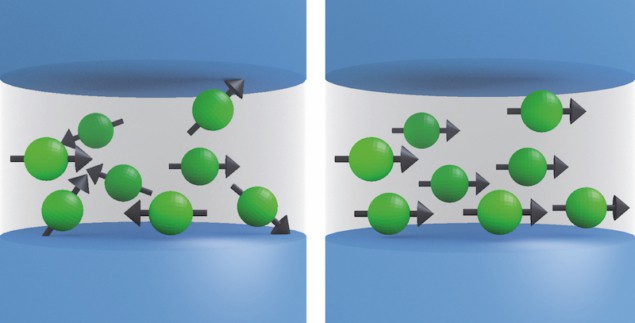
A new form of artificial synapse based on superconducting Josephson junctions and magnetic nanoclusters operates just like its natural counterpart and could be used to connect processors and store memories in future brain-like computers. The device is not only much more efficient than its biological counterpart in terms of the energy it consumes but it is also much faster.
Neuromorphic, or brain-inspired, computing aims to mimic the neural system at the physical level of neurons and synapses (which are the connections between neurons) and will rely on neuronal-like networks rather than series of binary 1s and 0s. It shows great promise and could drastically improve the efficiency of certain computational tasks, such as perception, decision making and language learning. It will also be able to more easily handle the vast data sets currently being generated around the world (big data) and support emerging technologies like artificial intelligence and the internet of things (IoT), thanks to it being massively parallel.
To make this new generation of machines, researchers are busy developing suitably plastic synapse-like devices – not least because synapses far outnumber neurons by several orders of magnitude in the human brain. And although advances are being made in leaps and bounds, most devices are still much less energy-efficient than the human brain.
Voltage spikes
The researchers, led by Michael Schneider from NIST, made their synapses using standard fabrication techniques borrowed from digital Josephson junction computing and magnetic random access memories (RAM). The Josephson junctions consist of two layers of superconducting materials with an insulator made of nanoscale clusters of manganese in a silicon matrix in between. When they apply an electric current through electrodes on the device (made from niobium) and this current exceeds a critical level, voltage spikes are produced.
A neuron also works in this way – by generating action potentials (spiking with a particular fire time) that propagate along the axon. These action potentials are transmitted through a junction to the next neuron and the more firing between neurons, the stronger the connection. Both real and artificial synapses can thus maintain old circuits and create new ones, explains Schneider.
Orienting spins
The nanoclusters in the artificial synapse are in fact bar magnets with spins that can be oriented either randomly or in a coordinated way. The researchers say they can control the number of nanoclusters pointing in the same direction, which affects the superconducting properties of the Josephson junction.
“The synapse remains in a superconducting state except when we activate it by applying current pulses in a magnetic field to order the nanocluster spins,” explains Schneider. “It then starts producing voltage spikes.”
Better than their biological counterparts
The researchers are also able to apply electrical pulses without a magnetic field to reduce magnetic ordering and increase the critical current. “This design, in which different inputs alter spin alignment and resulting output signals, is similar to how synapses in the brain operate,” says Schneider.
“However, these artificial synapses are in fact better than their biological counterparts, since they can fire much faster – 1 billion times per second compared to a brain cell’s 50 times per second using just one ten-thousandth as much energy.”
Efficient artificial synapses at last
“The spiking energy is in fact less than 1 attojoule and we don’t know of any other artificial synapse that uses less energy,” he adds. “Although researchers have made superconducting devices that mimic brain cells before now, efficient synapses such as ours were missing.”
The synapses can be stacked into 3D structures so they could be used to make large systems for neuromorphic computing circuits. According to simulations by the NIST researchers, these systems would transmit electricity without resistance and data in them would be transmitted and processed in units of magnetic flux.
It is not all plain sailing though. Until now, the researchers say that they have only succeeded in making tens of these devices, and they need to make millions (or even more) to really achieve the result they are hoping for. “So, although here is a lot of promise, we still have a long way to go in scaling these synapses up to useful circuits,” Schneider tells nanotechweb.org. “Our next steps are to build small circuits and then go from there.”
The new superconducting synapses are detailed in Science Advances DOI: 10.1126/sciadv.1701329.



